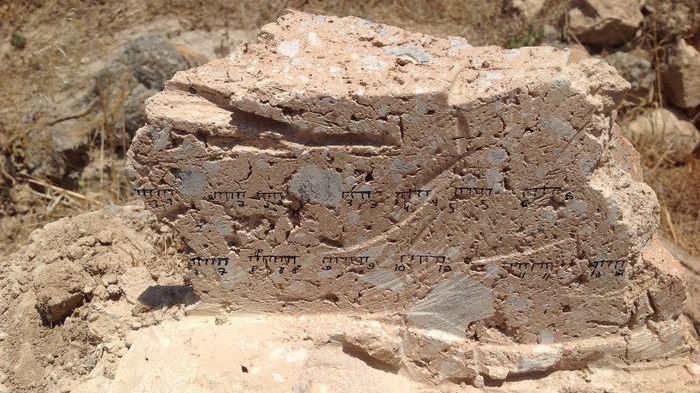Using a new scientific method, researchers from four Israeli universities helped archaeologists corroborate an event described in the Old Testament of the Bible: the conquest of the Philistine city of Gath by Hazel, King of Aram.
The researchers, from Tel Aviv University, The Hebrew University of Jerusalem, Bar-Ilan University and Ariel University, say that unlike previous methods, the new technique can help identify burnt materials discovered in excavations and estimate their firing temperatures.
“Our findings are very important for deciphering the intensity of the fire and scope of destruction at Gath, the largest and most powerful city in the Land of Israel at the time, as well as understanding the building methods prevailing in that era,” said professor Aren Maeir from the Martin (Szusz) Department of Land of Israel Studies and Archaeology at Bar-Ilan University.
The study, published in the scientific journal PLOS ONE, was led by Dr. Yoav Vaknin from the Sonia & Marco Nadler Institute of Archaeology at Tel Aviv University. He said their new method can provide conclusive answers as to when mud bricks like the ones they studied were used as merely construction or in conflict.
“During the same era, dwellers of other lands, such as Mesopotamia where stone was hard to come by, would fire mud bricks in kilns (a type of oven) to increase their strength and durability,” said Vaknin. “This technique is mentioned in the story of the Tower of Babel in the Book of Genesis.”
The new method relies on measuring the magnetic field recorded, or “locked” in the brick as it burned and cooled down. After proving the method’s validity, researchers applied it to a specific archaelogoical dispute: was a brick discovered at Tell es-Safi, identified as the Philistine city of Gath, home of Goliath, built of pre-fired bricks or burned on location?
The common hypothesis attributes the destruction of the structure to the devastation of Gath by Hazael, King of Aram Damascus, around 830 BC. However, a previous paper by researchers, including Maeir, proposed that the building did not burn down, but rather collapsed over decades, and that the bricks found in the structure had been fired before construction. If this hypothesis were correct, it would be the earliest instance of brick-firing technology discovered in Israel.
To settle the debate, the current research team applied the new method to samples from the wall at Tell es-Safi and the collapsed debris found beside it. The findings were indeed conclusive: the magnetic fields of all bricks and collapsed debris displayed the same orientation — north and downwards.
“Our findings signify that the bricks burned and cooled down in-situ, right where they were found, namely in a conflagration in the structure itself, which collapsed in a few hours,” said Vaknin. “Had the structure collapsed over time, not in a single fire event, the collapsed debris would have displayed random magnetic orientations.
“We believe that the main reason for our colleagues’ mistaken interpretation was their inability to identify burning at temperatures below 500 C,” he continued.
“It’s important to review conclusions from previous studies, and sometimes even refute former interpretations, even if they came from your own school,” said Maeir.
Professor Erez Ben-Yoself from the Sonia & Marco Nadler Institute of Archaelogy at Tel Aviv University said that the findings have more than just an archaeological and historical significance. Their research has “substantial ecological implications.”
“The brick firing technology requires vast quantities of combustive materials, and in ancient times this might have led to vast deforestation and even loss of tree species in the area.”




